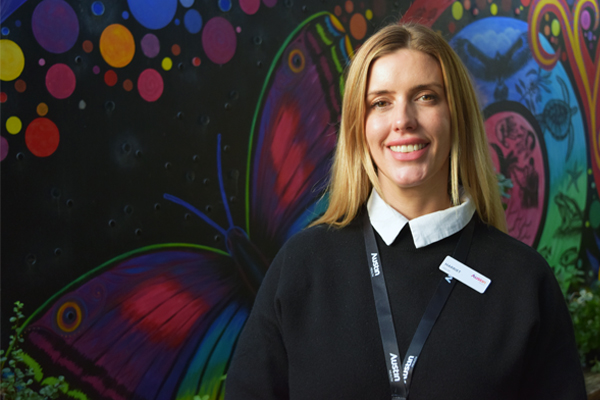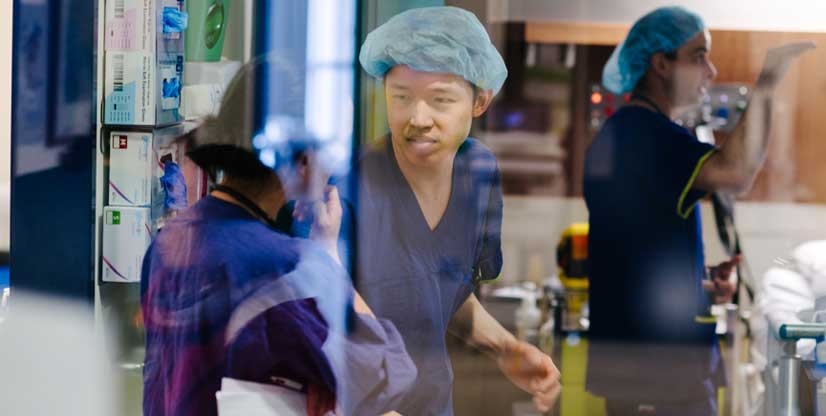About
Staff spotlight: Meet Harriet Comerford
- Home
- About
- Latest news
- Staff spotlight: Meet Harriet Comerford

27 June 2023
Recognising this PTSD Awareness Day, we chat with experienced, and exceptional Associate Nurse Unit Manager (ANUM), Harriet Comerford.
Harriet has been working at Austin Health’s Ward 17, as part of the Psychological Trauma Recovery Service (PTRS) for the past eight years, providing exceptional care to individuals diagnosed with post-traumatic stress disorder (PTSD).
The PTRS serves as a sanctuary for individuals who have experienced various forms of trauma, focusing on the recovery and support of people with post-traumatic mental health conditions.
What kinds of people do you meet on the Trauma Recovery Ward?
As Ward 17 in an adult inpatient unit, we have clients here who range from as young as 18 years of age and all the way to clients in their 80’s and 90’s.
There is always a mix of men and women, but often we find the majority men, as the service was originally designed for veterans and people current serving on the Australian Defense Force (ADF) only. However, in recent years we have opened up the service to everyone.
These days, we see a lot of front-line workers, such as police officers, paramedics, health care workers and soldiers. We also see people who have been affected by workplace injuries, survivors of road trauma, and victims of crime.
Is PTSD purely a mental condition? What impact does it have on the body?
While PTSD is a mental condition consisting of behavioural, psychological, mood and sleep issues, these issues can manifest themselves in physical symptoms.
We see a lot of people with an increased blood pressure or heart rate, fatigue, muscle tension, nausea, joint pains, headaches, back pain, or other types of pain.
What is the common misunderstanding when it comes to understanding PTSD?
The most common misconception we hear about PTSD, especially from those who have just been newly diagnosed is, ‘my life is over’ and there is no hope to regain a ‘normal life.’
It’s a very common mentality to have, but we always tell our patients and their families that PTSD is like any other condition - it can be treated, we are here to help, and there is hope.
What particular memory stands out to you from your time on the Trauma Recovery Ward?
I started working at Ward 17 in my graduate year when I came in contact with a Vietnam War veteran.
When he came in, he was broken, dejected, and lost.
Throughout his admission with the help of the team here, slowly but surely, the light came back to his eyes, and he smiled for the first time in years and could get through a night without waking up from nightmares.
I think this gentleman stands out for me because it was my first experience working here and it was truly amazing to see someone get their life back. He still pops in to visit the ward from time to time and always expresses his gratitude to the staff and the service that ‘saved my life.’
Following your years of experience, what’s the first thing you teach the newer nurses coming onto the ward? Also, what do you teach the families and friends of patients with PTSD?
When new nurses come onto the ward to work for the first time, I think it’s always important to remind them to always lead with kindness, compassion, and empathy. Everyone’s story is unique and we should never assume that everyone has had the same journey.
From a practical standpoint - never approach someone with PTSD from behind. It’s not something that many people consider if they haven’t worked with people with PTSD before, but it’s really important.
For people who have a loved one with PTSD, I would suggest to: listen, be present, educate yourself as much as possible, and seek support for themselves as well. No one has to go through this alone – and that includes the families.


